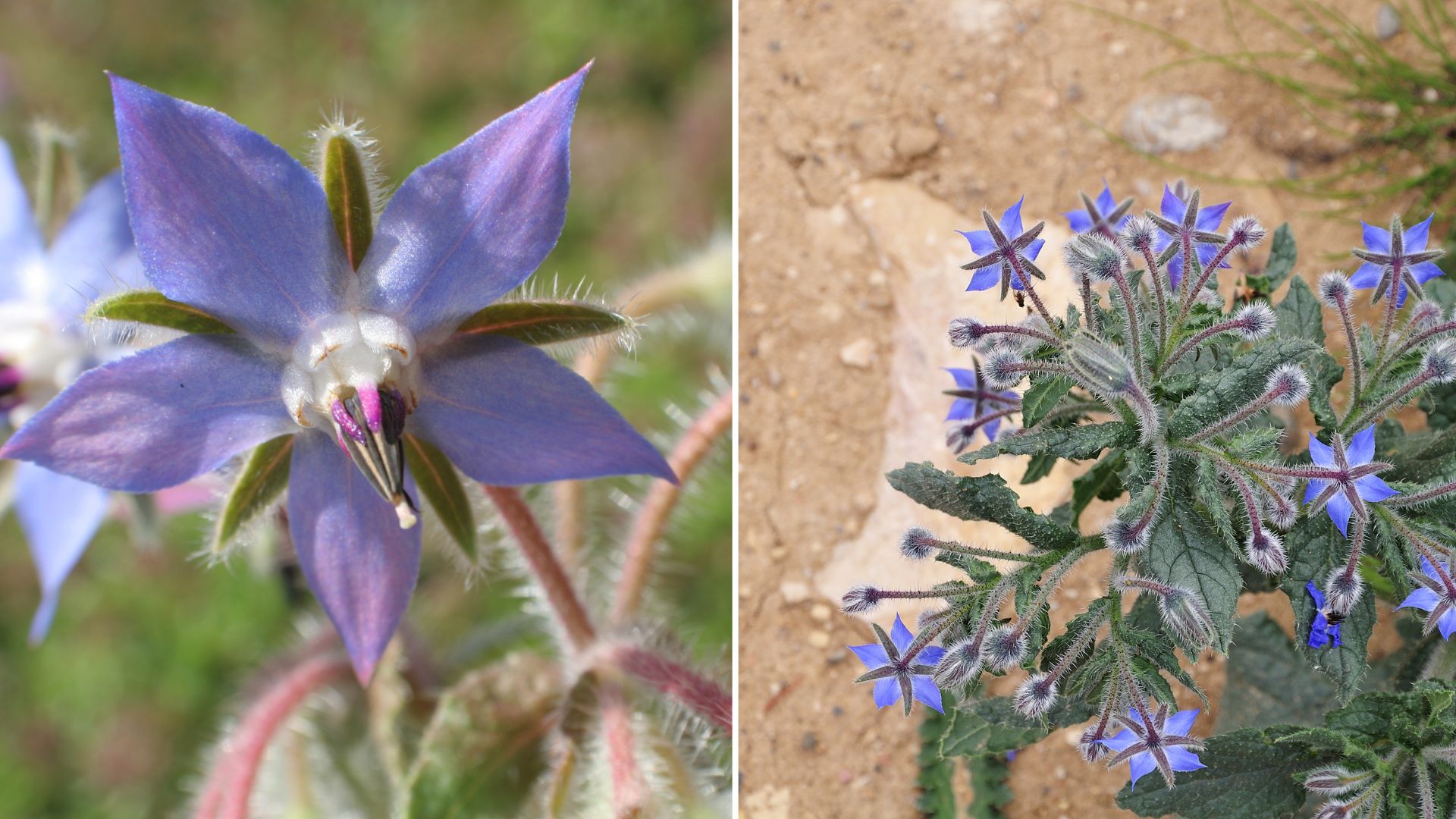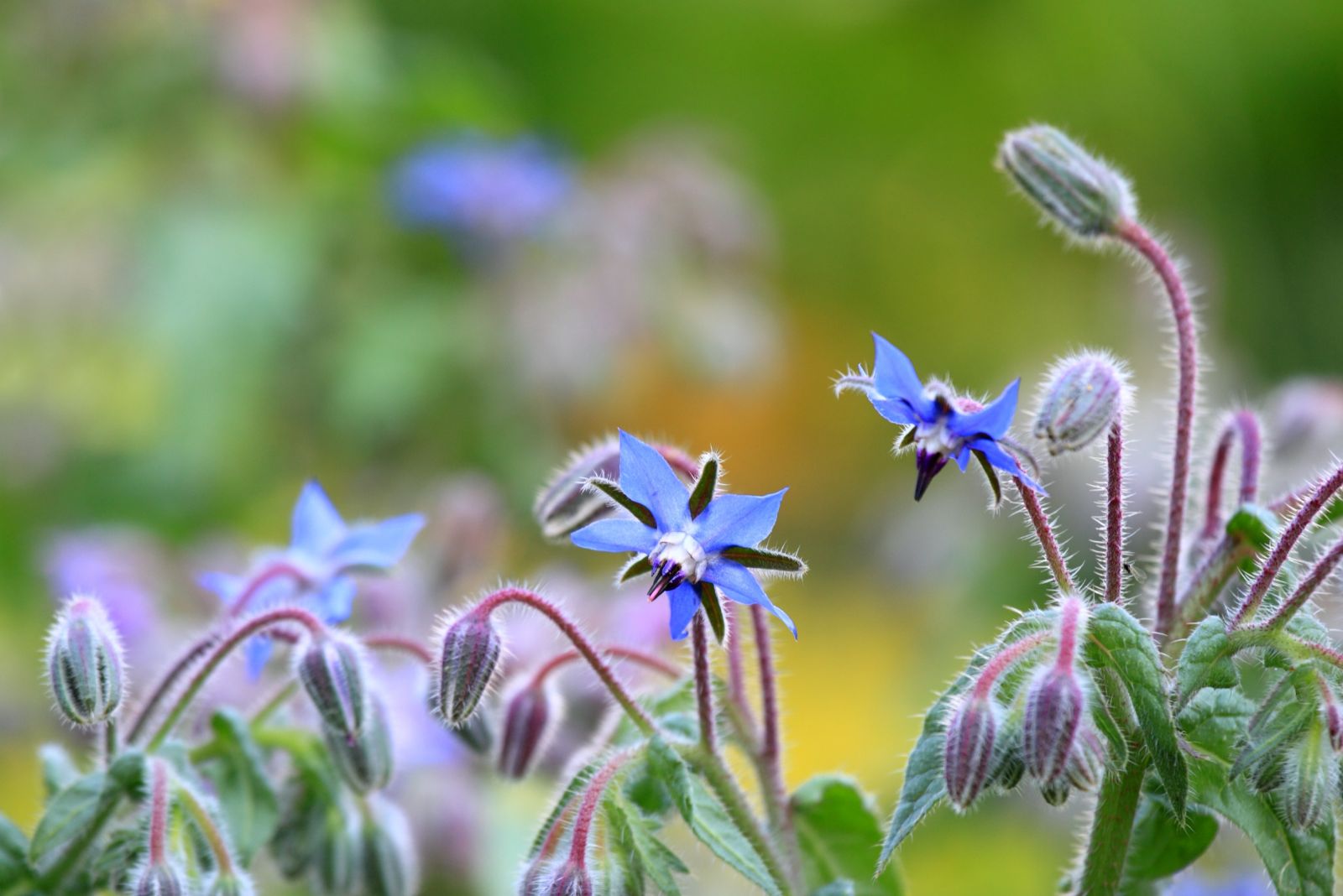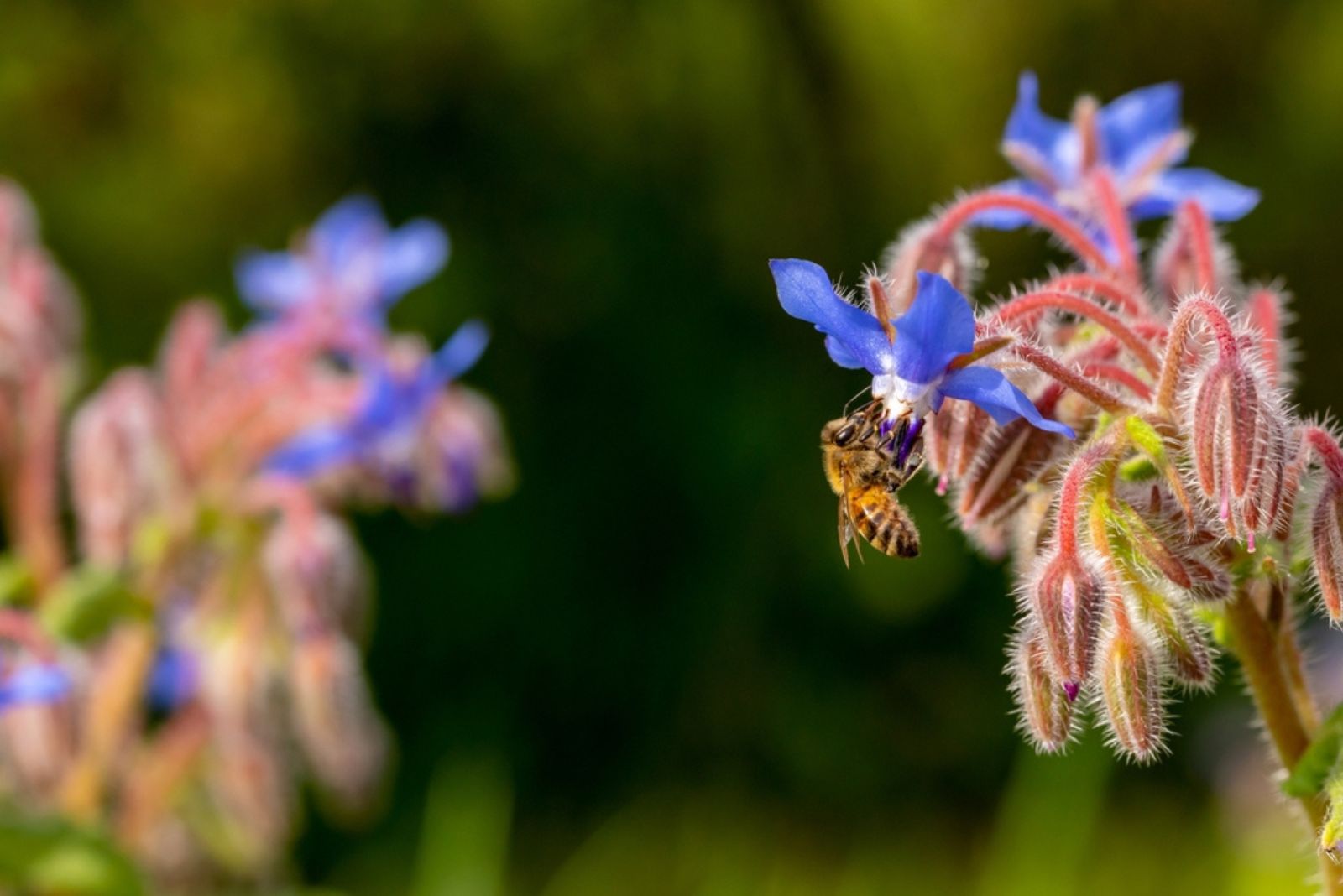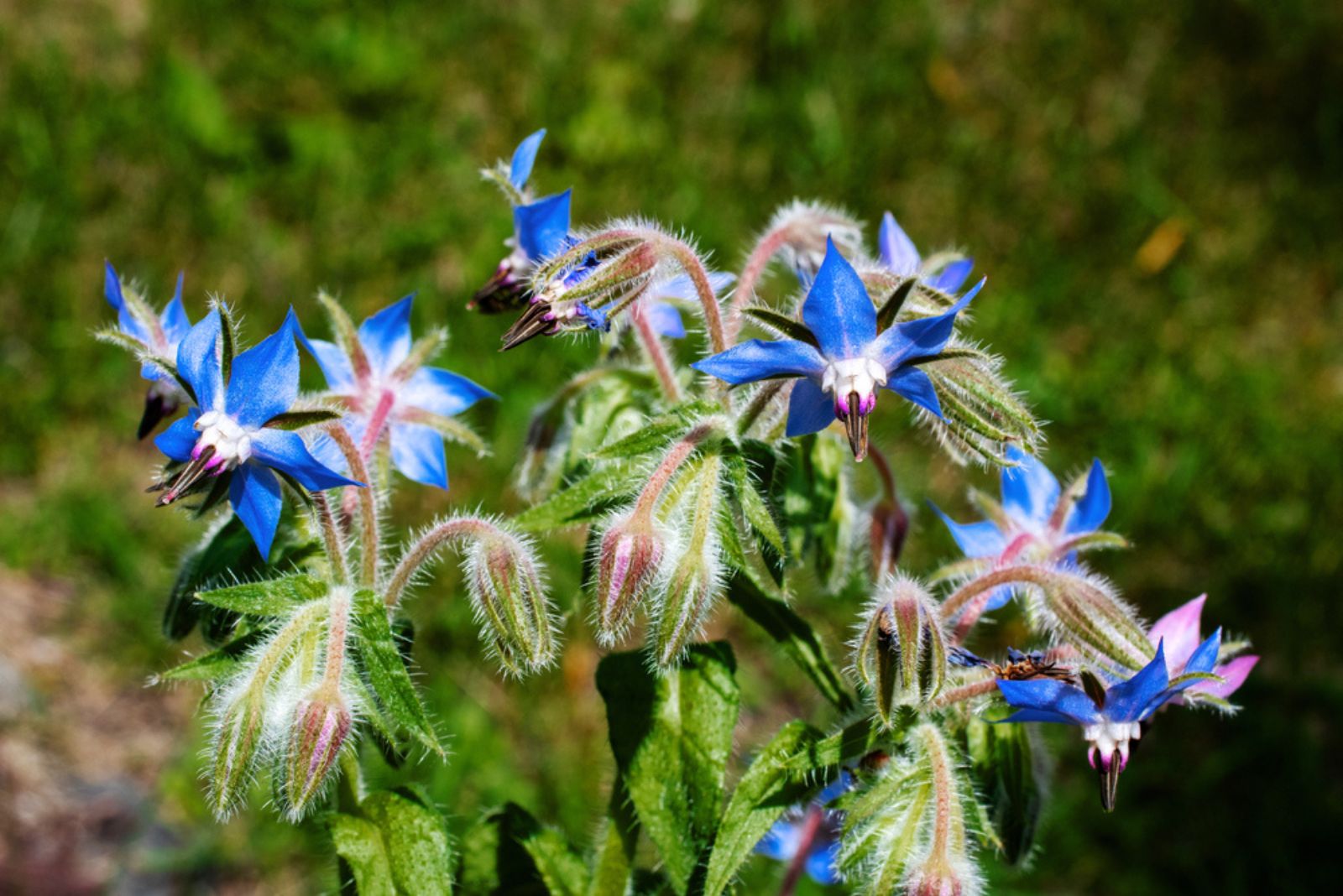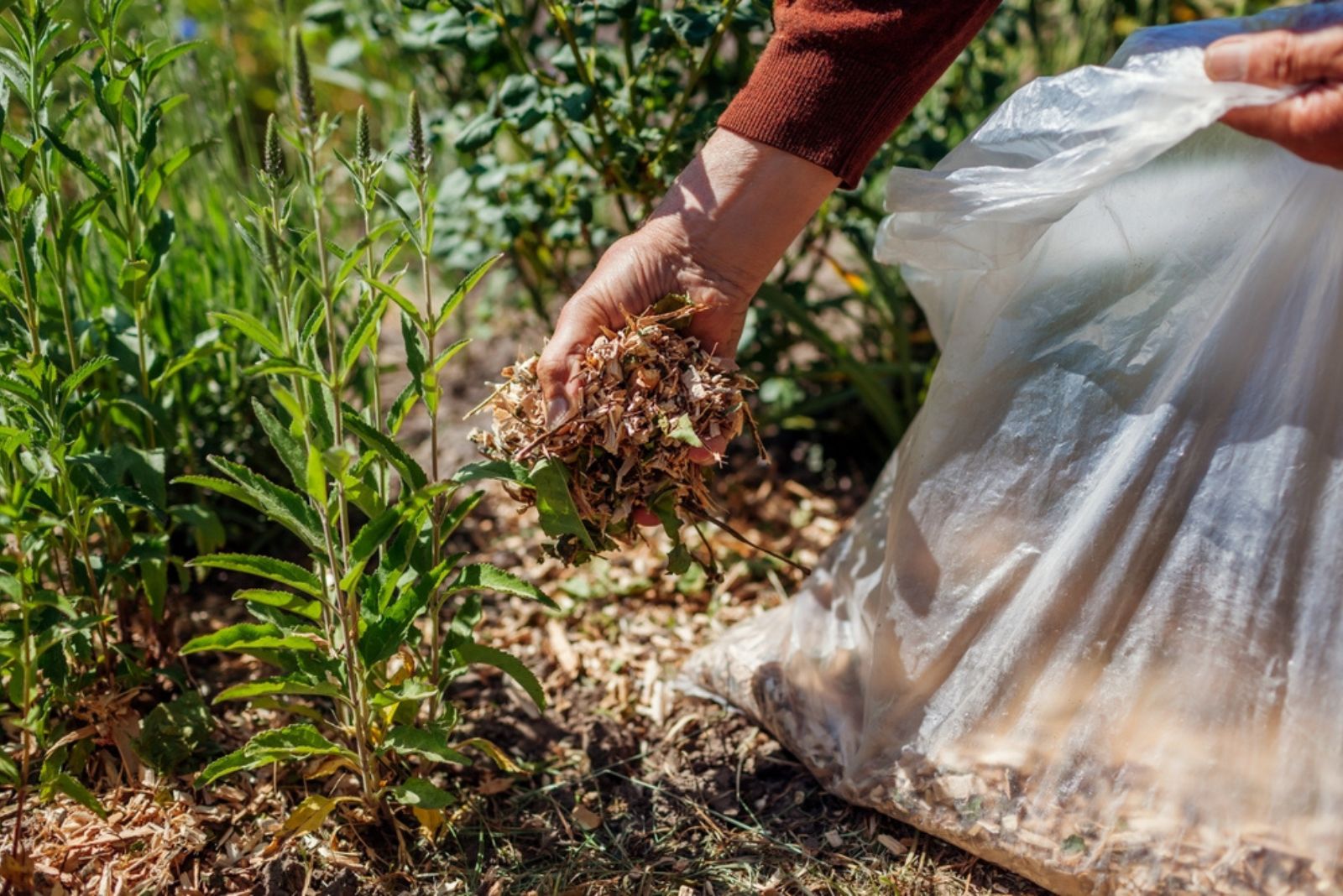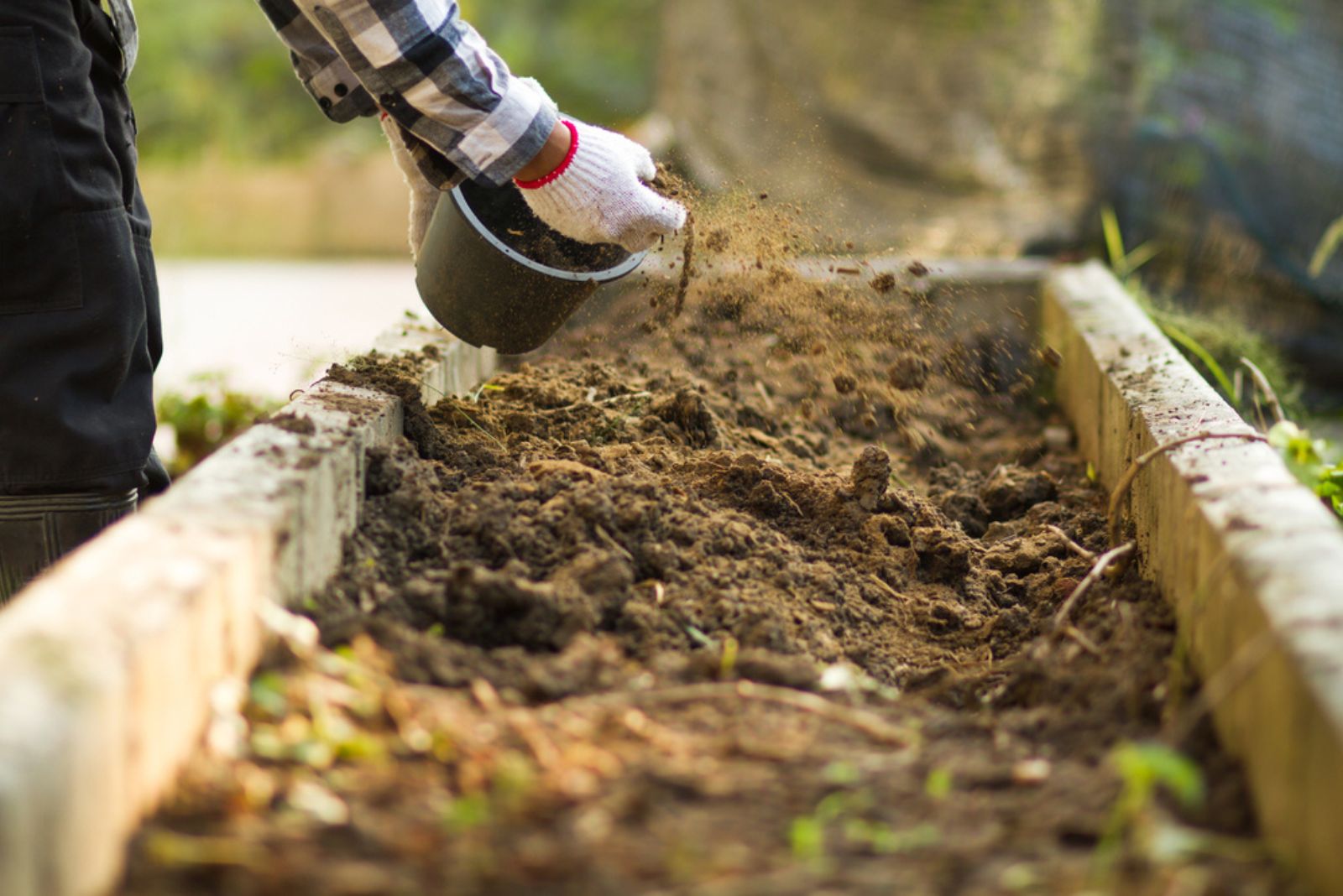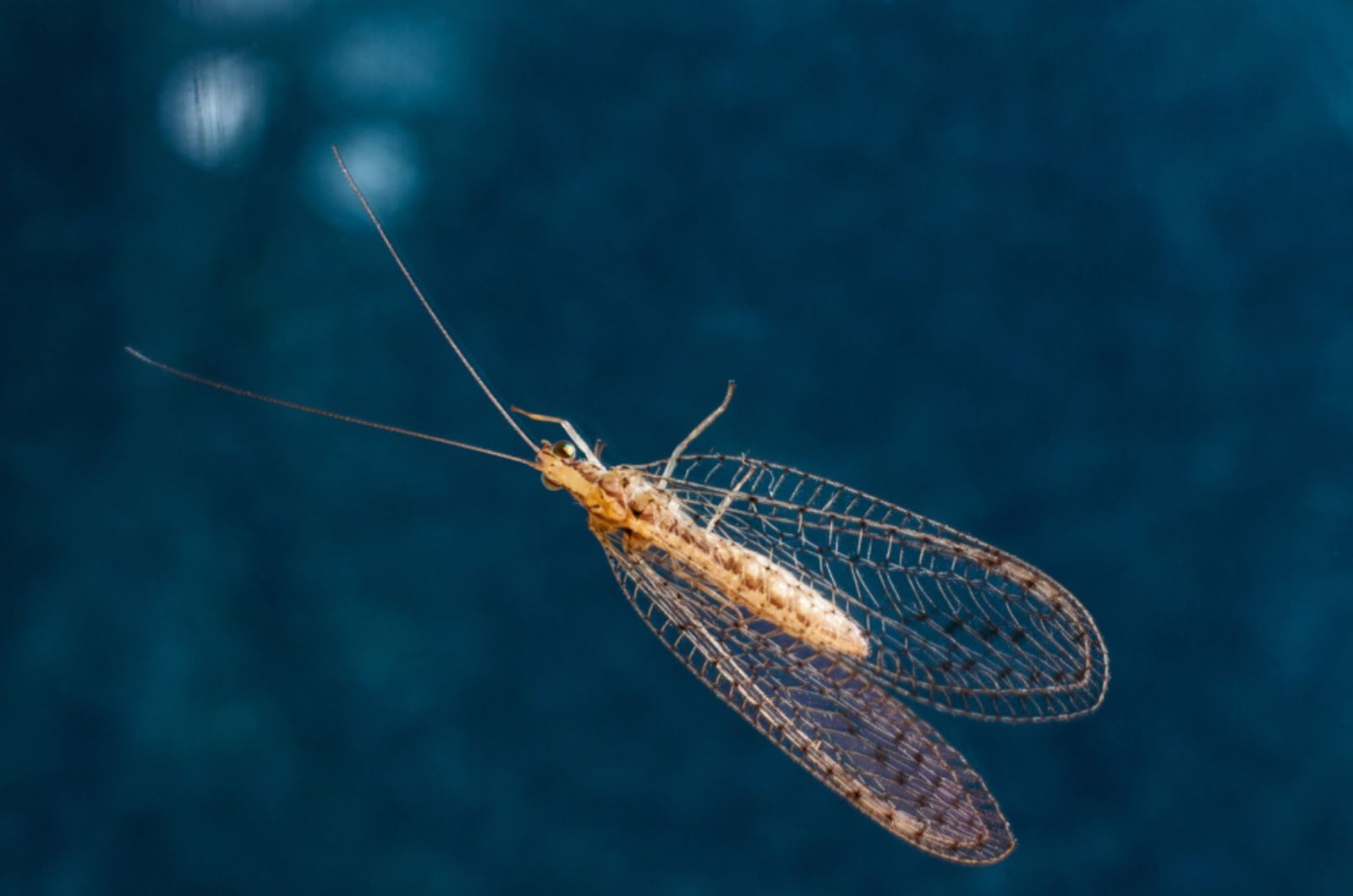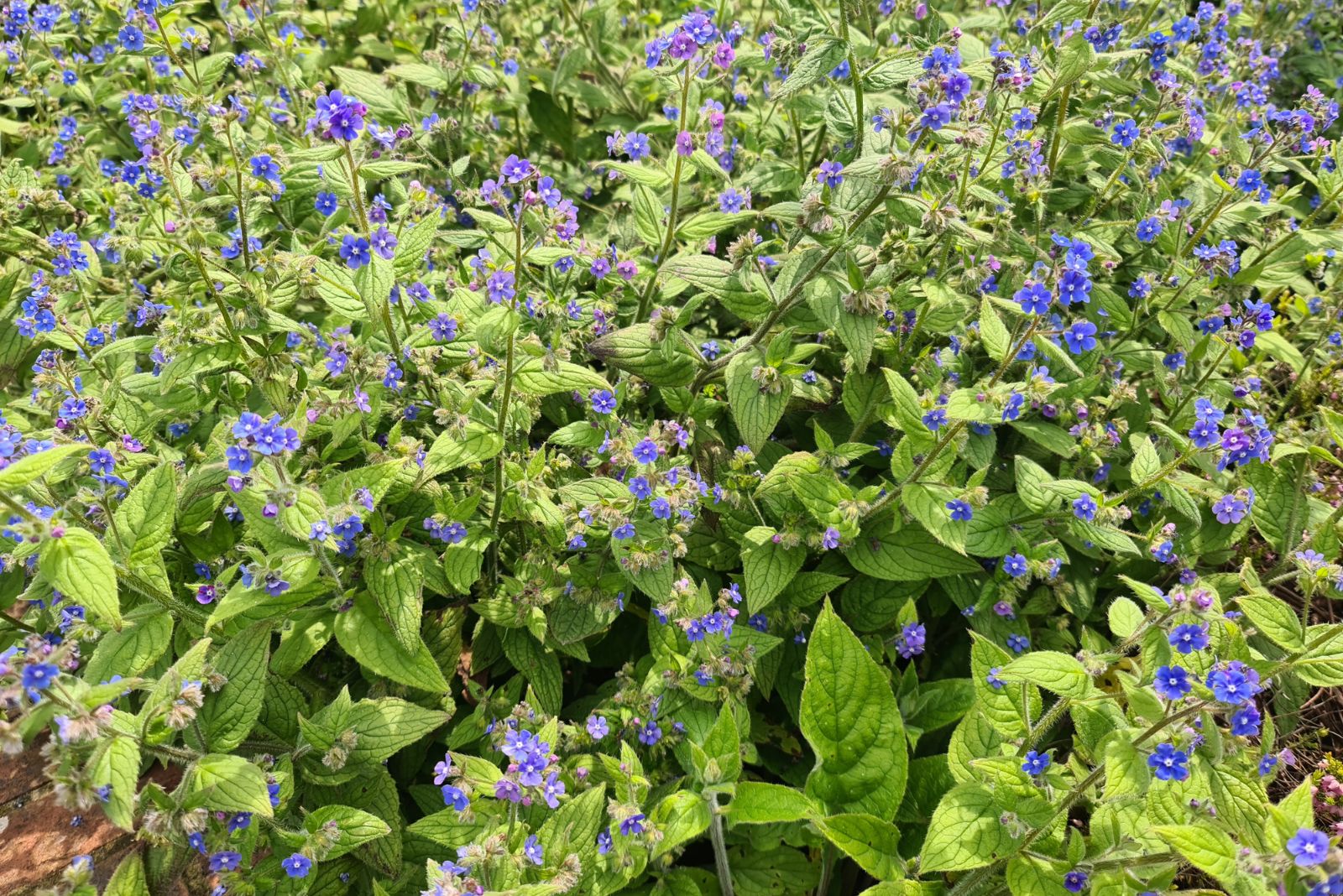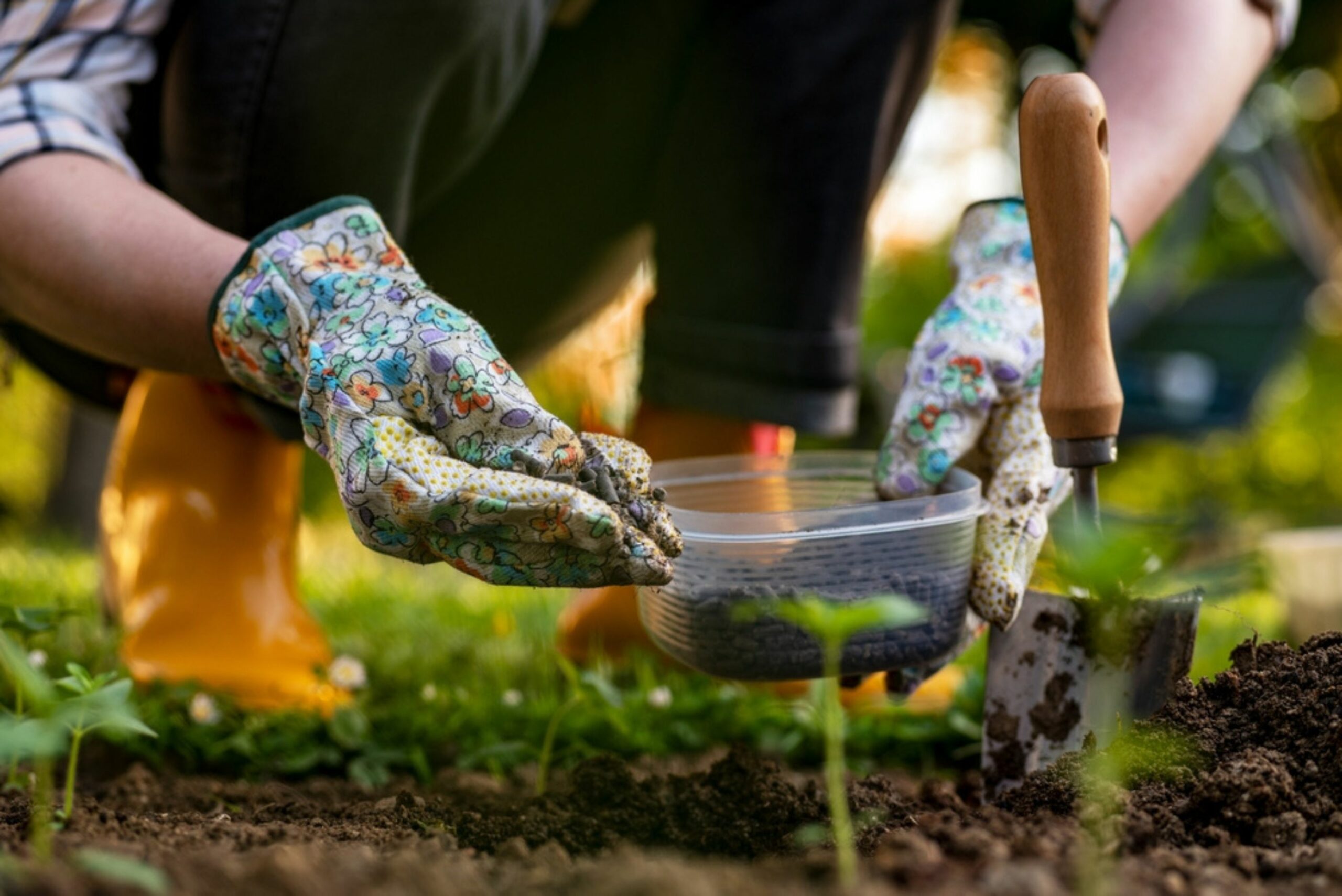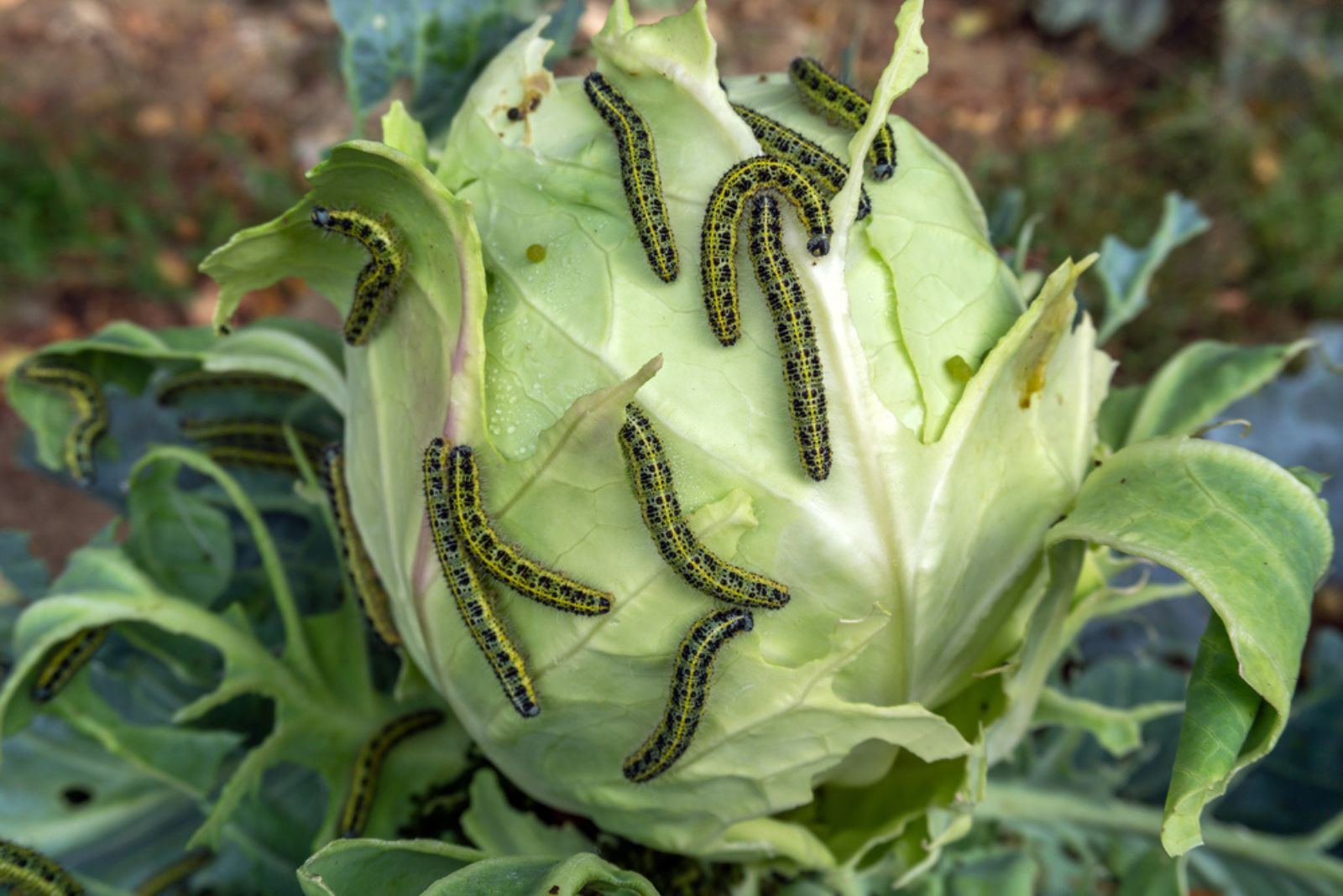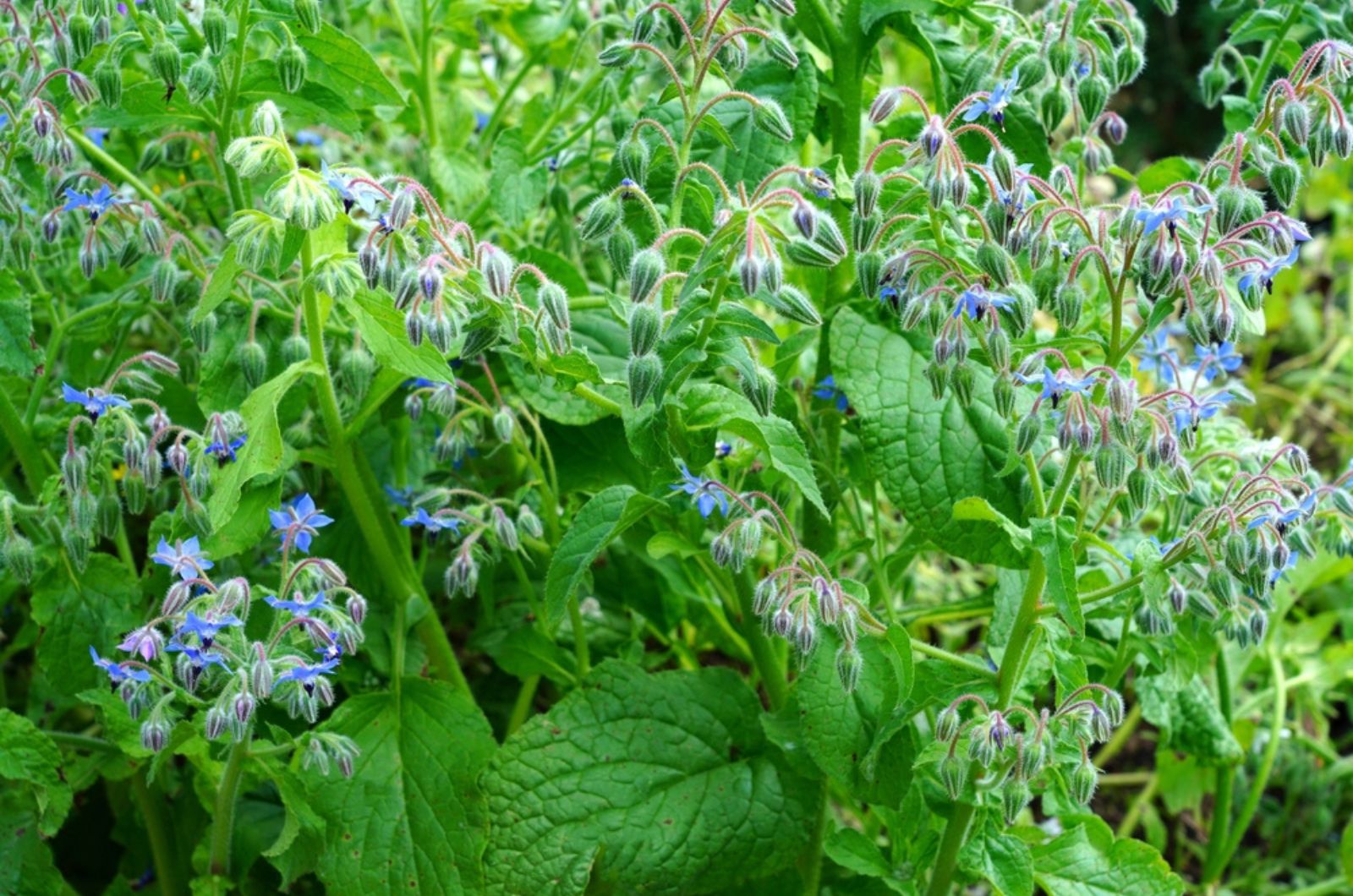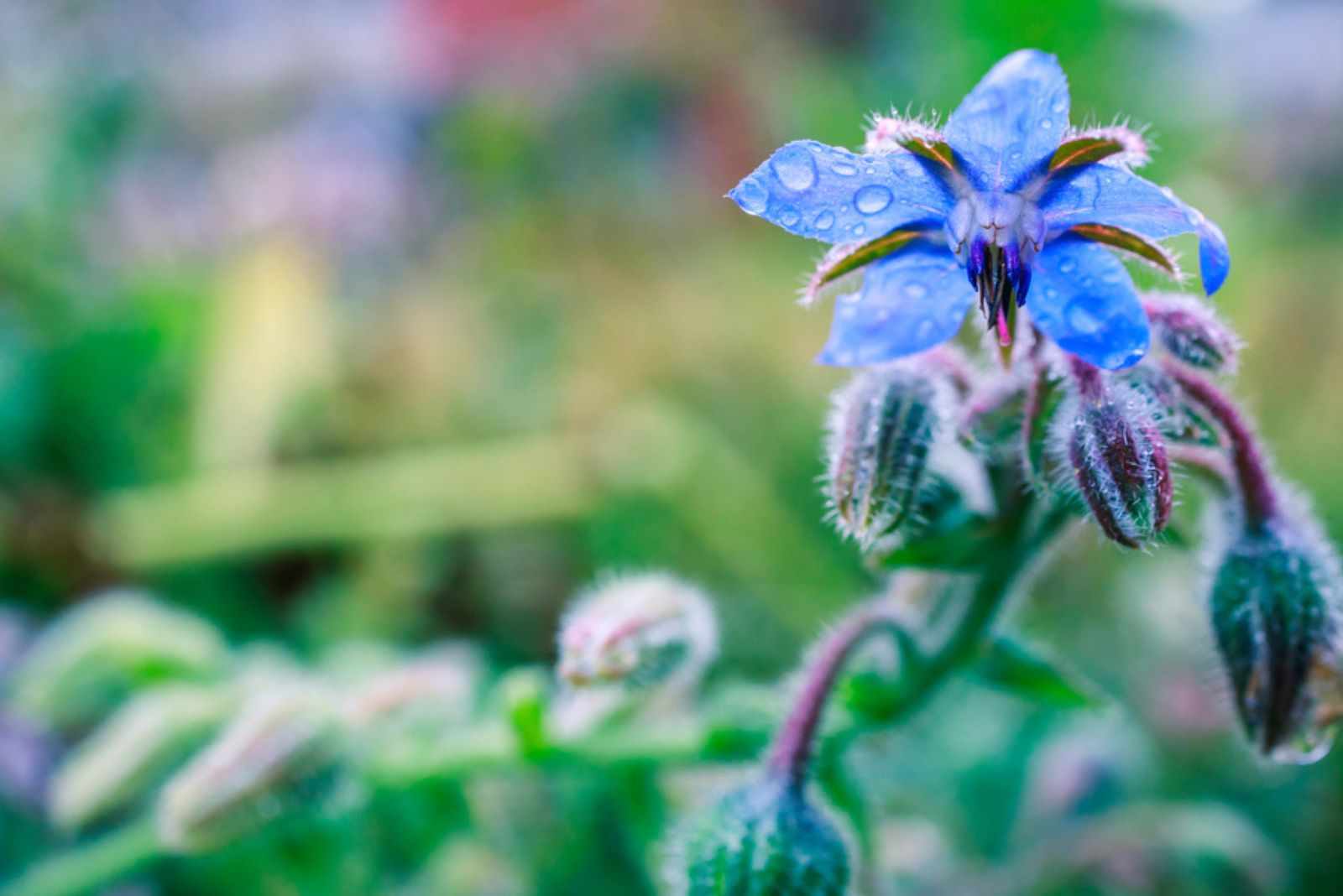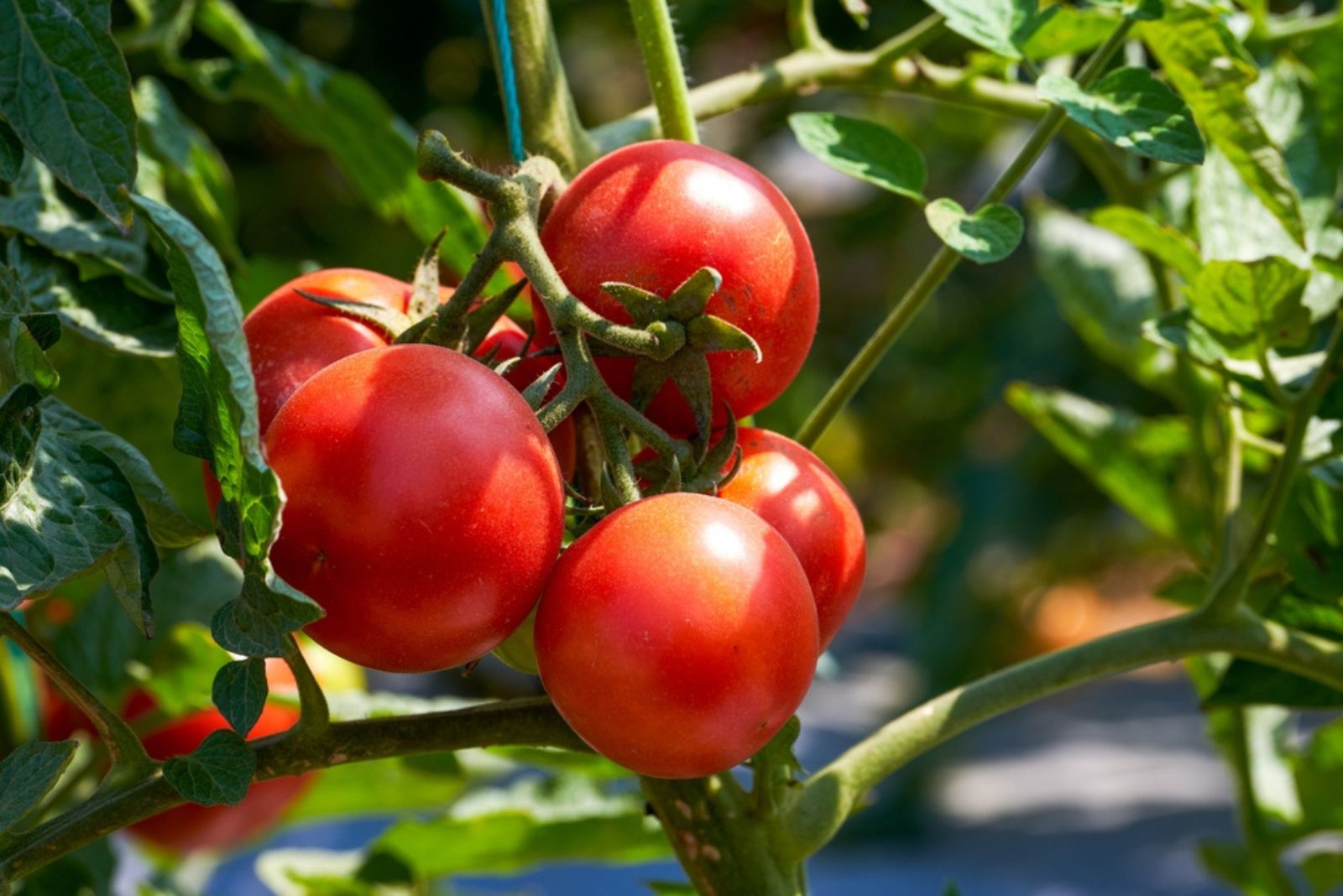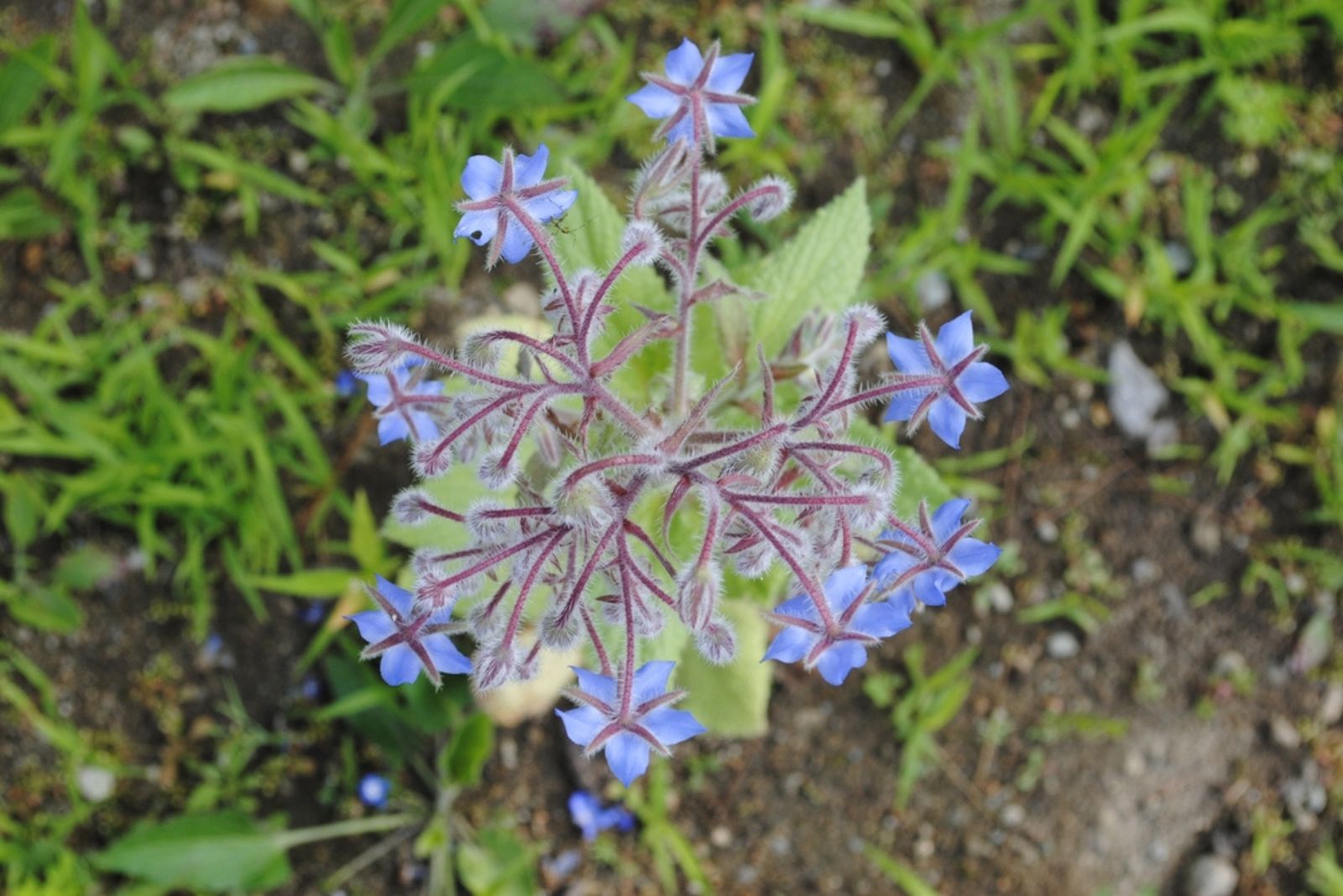Borage, otherwise known as Borago officinalis, is an annual flowering plant that produces star-like flowers and hairy leaves. This plant is native to the Mediterranean region, so it can adapt to growing in dry conditions.
There are a lot of reasons to grow borage – it attracts pollinators, deters pests, can be used to make delicious meals, and has medicinal benefits along the way. Its vibrant blue flowers, easy cultivation, and role as a companion plant make it an excellent addition to any garden!
If you are considering growing borage, then keep reading to find out more reasons why you should do it.
1. Aesthetically Pleasing
With its vibrant purple and blue flowers, borage can really spruce up your garden. What’s also great is that they have a relatively long blooming season, so these flowers will decorate your garden longer than others.
The plant’s bushy and lush green foliage further enhances its visual appeal, making it a delightful addition to flower beds, borders, or container gardens. It can also be added around trees, fruit bushes, and to herb gardens.
2. Attracts Pollinators
We are not the only ones that love borage – bees, butterflies, and other beneficial insects would agree too. They are strongly attracted to the abundant nectar and pollen-rich flowers of borage.
Since these flowers stick around longer than others, bees and butterflies will also be flying around your garden longer than usual. This will promote better fruit and vegetable yields, contributing to a more productive and thriving garden ecosystem.
3. You Can Eat It
This is my favorite reason!
Borage is an edible herb that can be used to make delicious meals. Both the leaves and flowers can be eaten raw or cooked, and they can also be used as a garnish or added to beverages.
You can use the leaves and flowers to enhance salads, soups, cocktails, or even freeze them into ice cubes. Borage leaves are also commonly steeped to create a refreshing and soothing herbal tea.
Furthermore, borage has been traditionally used for its medicinal properties. Borage is rich in gamma linoleic acid – an omega-6 fatty acid that can reduce inflammation [1]. It can also help with asthma, atopic dermatitis, and rheumatoid arthritis [2,3].
The tea is often consumed to promote relaxation, soothe respiratory issues, and support overall well-being.
Here are some borage recipes:
• Cucumber Salad With Borage Flowers
• Borage Leaf, Pea and Mint Soup
.
4. It Is Self-seeding
Although borage is an annual plant, it can come back for years after being planted thanks to its self-seeding feature. Once established, borage plants readily produce seeds that drop to the ground and germinate in the following growing season.
After successful germination, the plant will keep on growing and developing. At the end of the season, the plant will produce seeds again that will develop into a brand new plant.
With borage, you won’t have to spend time and energy (or money) on planting new seeds every season.
5. Can Be Used As Mulch
If you use mulch, then you should definitely grow borage. Since borage can effectively absorb and store nutrients such as potassium from the soil, it can be used as mulch.
The large leaves of borage plants can be harvested and spread around the base of other plants as a natural mulch. As the leaves break down, they release valuable nutrients into the soil, thus enhancing its fertility and overall health.
Organic mulch also helps to retain soil moisture and suppress weed growth. If you don’t grow borage, you can also use grass clippings as mulch.
Borage mulch can be used for many plants, although blooming and fruiting plants may benefit the most.
6. Soil Aeration
Borage has a unique root system that can easily penetrate the soil, thus improving soil aeration. If you have a very compact soil, then you should definitely consider growing borage.
Since borage is a self-seeding plant that can grow in compact soils, you can use it to cover bare patches in the garden.
7. Acts As Trap Crop
Certain plants act as trap crops – this means that they allure certain pests in order to protect more valuable surrounding plants.
By acting as a trap crop, borage helps protect your desired plants from being damaged or infested by pests, making it an effective natural pest control strategy.
Borage can trap aphids, which are annoying pests that completely ruin your tomatoes, cucumbers, beans, Brussels sprouts, and many more!
8. Used To Make Fertilizers
You can also use borage to make your own liquid fertilizers. The leaves and flowers of borage contain high levels of nutrients, such as potassium and calcium, which are essential for plant growth.
You can either combine chopped borage with other garden weeds to make a weed tea, or you can use borage alone.
Here’s how you can make a liquid fertilizer with borage leaves.
9. Great For Compost
Borage can be a great addition to your compost. Its abundant foliage and quick decomposition rate make it an excellent “green” component for compost piles.
Adding borage plant material to your compost helps balance the carbon-to-nitrogen ratio, speeding up the decomposition process and producing nutrient-rich compost that can be used to improve soil fertility and enhance plant growth!
10. Repels Pests
If you are having issues with pests roaming around your garden, then you should grow borage. Borage contains certain compounds that emit a scent disliked by many common garden pests, such as hornworms and cabbage worms.
By planting borage near susceptible plants, you can naturally deter these pests and protect your garden without the need for chemical pesticides.
11. Chickens Love It Too
While garden pests find borage unappealing, chickens absolutely love it!
The leaves and flowers of borage are not only safe for chickens to consume but are also highly nutritious for them. Borage can improve feather quality and enhance egg production.
12. Attracts Lots Of Birds
If you are a bird enthusiast, then you are probably already aware of the effect that borage has on a lot of birds. Those vibrant flowers, seeds, and abundant nectar act as magnets for birds!
Hummingbirds and finches are specifically drawn to it. So, if you want to create a welcoming habitat for birds, definitely consider growing borage.
In case you want to attract cardinals into your backyard, then check out: 5 Tips for Attracting Cardinals To Your Backyard Haven
13. Companion Planting
Attracting pollinators and repelling pests make this plant a great companion. Borage has the ability to enhance the growth and flavor of neighboring plants.
Borage is a great companion for tomatoes, cabbage, cucumbers, strawberries, squash, beans, and fruit trees.
14. It Is Easy To Grow
In addition to its many benefits, borage is incredibly easy to grow. This is a hardy and resilient herb that can thrive in various growing conditions (remember it originates from Mediterranean regions).
Whether you have a sunny garden or a container on your balcony, borage can adapt and flourish. It requires minimal maintenance and is known for its vigorous growth.
Once established, borage readily self-seeds, so it can come back year after year without much effort on your part.
References:
1. Kapoor R, Huang YS. Gamma linolenic acid: an antiinflammatory omega-6 fatty acid. Curr Pharm Biotechnol. 2006 Dec;7(6):531-4. doi: 10.2174/138920106779116874. PMID: 17168669.
2. Arm JP, Boyce JA, Wang L, Chhay H, Zahid M, Patil V, Govindarajulu U, Ivester P, Weaver KL, Sergeant S, Israel E, Chilton FH. Impact of botanical oils on polyunsaturated fatty acid metabolism and leukotriene generation in mild asthmatics. Lipids Health Dis. 2013 Oct 2;12:141. doi: 10.1186/1476-511X-12-141. PMID: 24088297; PMCID: PMC3851449.
3. Reed GW, Leung K, Rossetti RG, Vanbuskirk S, Sharp JT, Zurier RB. Treatment of rheumatoid arthritis with marine and botanical oils: an 18-month, randomized, and double-blind trial. Evid Based Complement Alternat Med. 2014;2014:857456. doi: 10.1155/2014/857456. Epub 2014 Mar 19. PMID: 24803948; PMCID: PMC3977504.

